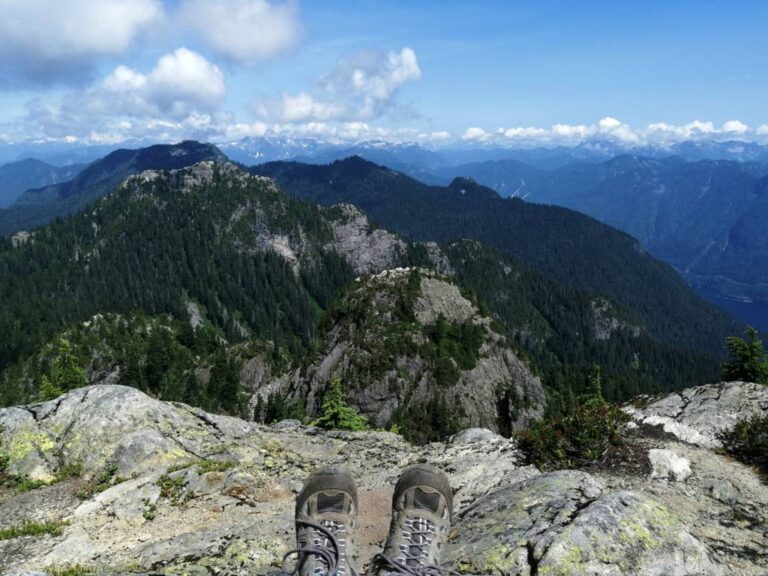Most people are familiar with the Grouse Grind and Joffre Lakes, but Metro Vancouver boasts dozens of spectacular trails that remain largely undiscovered. Hikes in Metro Vancouver offer incredible diversity, from coastal bluffs to old-growth forests.
Yet, many of the most beautiful routes see only a fraction of the crowds found on popular trails. After years of exploring the region’s hidden corners, I’ve discovered seven remarkable trails that provide stunning scenery without the typical weekend chaos.
Each of the seven secret hikes in the Vancouver area offers its unique character and challenges. From the mysterious ruins of Burnaby to the pristine wilderness of Surrey, the underrated hikes Metro Vancouver contains will surprise even seasoned outdoor enthusiasts.
Best of all, several of the easy hikes Metro Vancouver residents overlook can be completed in half a day, making them perfect for spontaneous adventures.
1. Burnaby Fraser Foreshore Park to Pitt River Trails
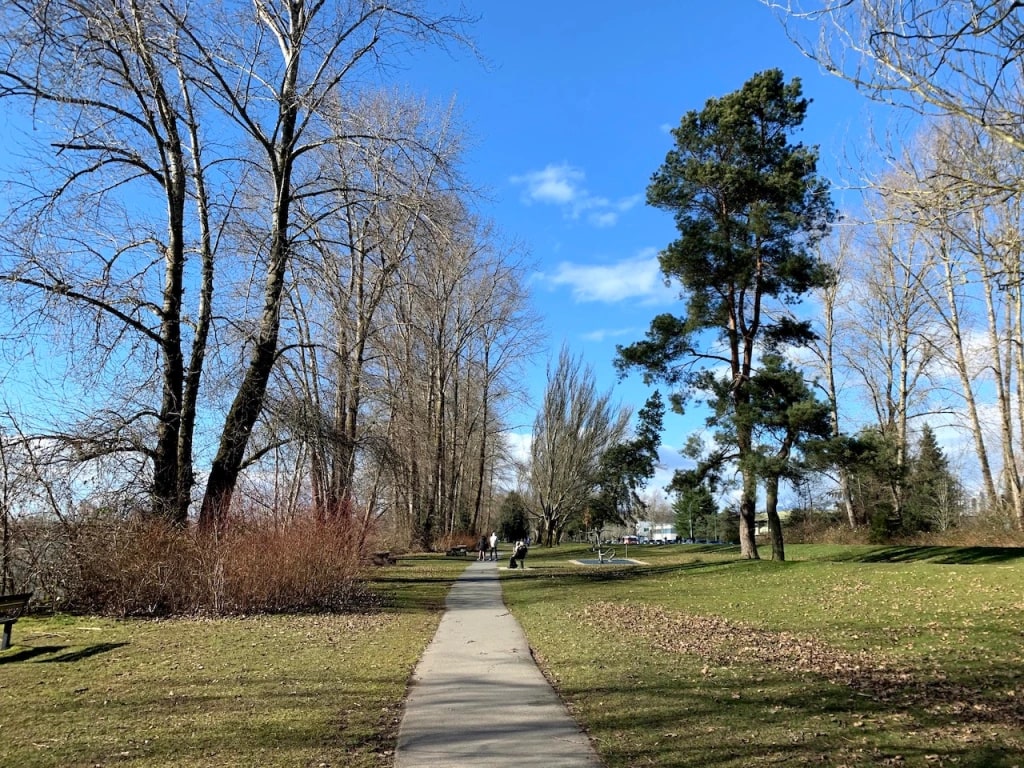
Location and Access Information
The Burnaby Fraser Foreshore Park connects to a network of quiet trails in BC that most Vancouver residents never discover. Located at the eastern edge of Burnaby, the park sits where the Fraser River meets the Pitt River.
Parking is available at the Hume Avenue entrance; however, the lot fills up quickly on sunny weekends.
The trailhead begins near the industrial area, but within minutes, you find yourself surrounded by towering cottonwoods and peaceful river views.
Public transit access requires a bus ride to the Edmonds SkyTrain station, followed by a 15-minute walk, making it one of the more accessible nature walks the Vancouver area provides.
Trail Details and What to Expect
Distance: 8.2 kilometers round trip
Difficulty: Easy to moderate
Elevation gain: 45 meters
Time required: 2.5 to 3 hours
The trail follows the Fraser River dyke system before branching into forested sections that few people explore.
Wooden boardwalks cross several wetland areas where herons and eagles frequently hunt. The path continues along the Pitt River, offering views of the Golden Ears mountains.
Midway through the hike, you encounter remnants of old logging operations, including rusted machinery and concrete foundations.
The trail surface varies from packed gravel to forest floor, with several wooden bridges crossing smaller creeks. Spring brings wildflowers and migrating birds, while fall offers spectacular maple colors.
| Feature | Details |
| Best season | April to October |
| Washrooms | Available at the parking area |
| Dogs allowed | Yes, on leash |
| Difficulty rating | 3/5 |
Hidden Highlights Along the Route
The most spectacular section occurs where the Fraser and Pitt rivers converge. A small viewing platform provides panoramic views of the North Shore mountains reflected in the calm water. Few hikers venture beyond the main dyke trail to discover the forest loop that connects back to the starting point.
Local wildlife includes river otters, beavers, and over 200 bird species. The trail passes through various ecosystems, including riparian forests, wetlands, and grasslands. During salmon runs in late summer, the rivers become active with jumping fish and feeding birds.
2. Minnekhada Regional Park West Loop
Discovering One of Surrey’s Best Kept Secrets
Minnekhada Regional Park represents one of the finest examples of scenic trails near Vancouver that remains relatively unknown. Located in Coquitlam, the park contains over 200 hectares of marshland, forest, and farmland. The West Loop trail provides the most diverse experience within the park system.
Access begins at the Quarry Road parking area, where interpretive signs provide an explanation of the area’s farming and logging history. The trail immediately enters dense forest dominated by western red cedar and Douglas fir trees. Within the first kilometer, you cross Minnekhada Creek on a substantial wooden bridge.
Trail Experience and Natural Features
Distance: 6.8 kilometers
Difficulty: Moderate
Elevation gain: 180 meters
Time required: 2 to 2.5 hours
The trail climbs steadily through second-growth forest before reaching the park’s highest viewpoint. From here, clear views extend across the Fraser Valley to the Cascade Mountains. The descent follows a different route through the Addington Marsh area, where elevated boardwalks protect sensitive wetland habitat.
The marsh section offers excellent bird-watching opportunities, particularly during spring and fall migrations. Great blue herons nest in the area, and red-winged blackbirds are common throughout the warmer months. The trail surface consists of well-maintained dirt paths with occasional root obstacles.
Historical Significance and Wildlife Viewing
Minnekhada means “beside running water” in the Dakota language, reflecting the area’s rich Indigenous heritage. The park features remnants of the Minnekhada Lodge, which was built in the 1930s as a private retreat. Concrete foundations and stone walls remain visible along the trail.
The diverse ecosystem supports black bears, coyotes, and numerous small mammals. Beaver activity is evident throughout the marsh areas, with several active dams visible from the boardwalk sections. The combination of forest and wetland habitats creates ideal conditions for amphibians and reptiles.
3. Colony Farm Regional Park North Trail
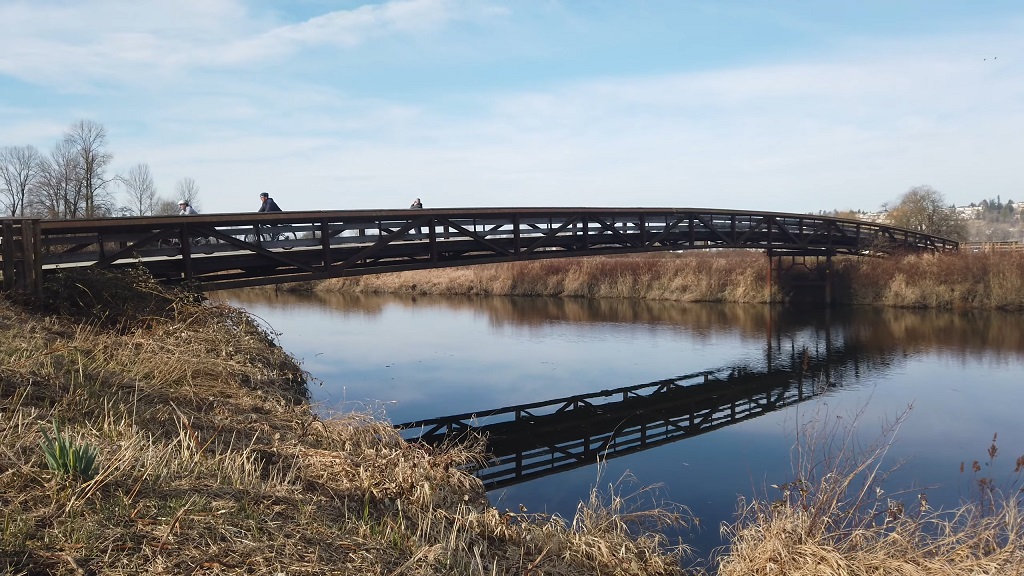
A Hidden Wilderness in Coquitlam
Colony Farm Regional Park features some of the most underrated hikes that Metro Vancouver has to offer, yet most visitors tend to stick to the southern trails near the main parking area. The North Trail system provides access to pristine wetlands and offers views of the Pitt River that few people ever see.
The trailhead begins at the Lougheed Highway entrance, though signage is minimal and easy to miss. The path immediately crosses the Coquitlam River on a pedestrian bridge before entering dense riparian forest. The first section can be muddy during winter months, requiring waterproof footwear.
Exploring the Forgotten Trails
Distance: 7.5 kilometers
Difficulty: Easy
Elevation gain: 30 meters
Time required: 2.5 hours
The trail follows old farm roads through what was once the Essondale Hospital farm operation. Concrete foundations and agricultural equipment remain scattered throughout the forest, creating an interesting blend of nature and history. The path continues north toward the Pitt River, passing through several distinct ecosystems.
Interpretive signs explain the area’s psychiatric hospital history and its transition to parkland. The hospital operated from 1913 to 1983, and patients worked the farm as part of their treatment. Today, nature has reclaimed most of the agricultural areas, creating excellent habitats for wildlife.
| Trail Section | Distance | Highlights |
| River crossing to the junction | 2.1 km | Historic foundations |
| Junction to wetlands | 2.8 km | Bird watching area |
| Wetlands to Pitt River | 2.6 km | Mountain views |
Wetland Ecosystem and Wildlife
The northern section opens into extensive wetlands that provide critical habitat for waterfowl and shorebirds. Elevated viewing platforms allow observation without disturbing sensitive nesting areas. During spring migration, over 40 bird species can be observed in a single visit.
The wetlands also support healthy populations of painted turtles, which can often be seen basking on logs during warm weather. Beaver activity has created numerous small ponds throughout the area, increasing habitat diversity. The trail connects to other regional park systems, allowing for extended hiking opportunities.
4. Belcarra Regional Park Jug Island Trail
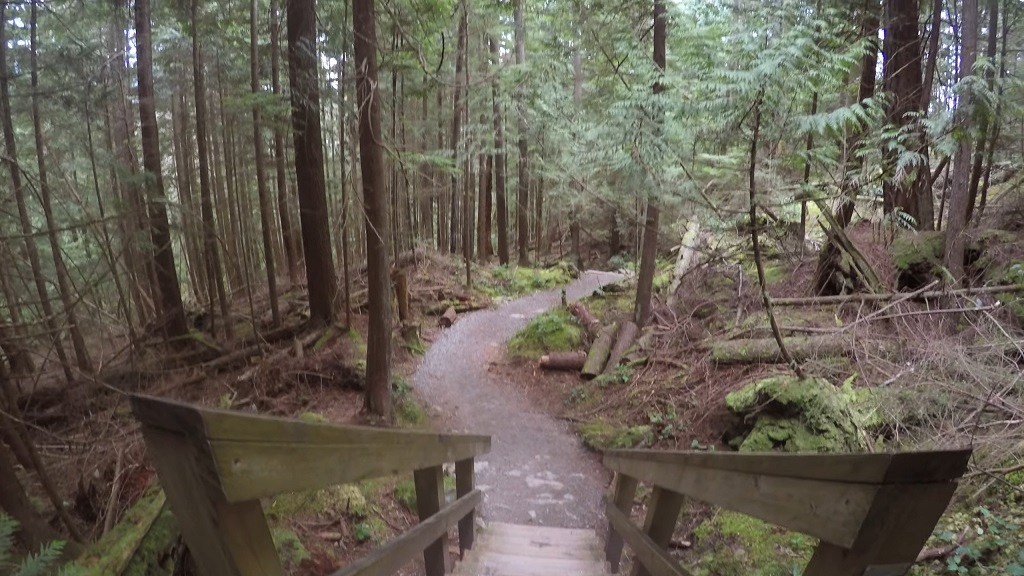
Coastal Beauty Without the Crowds
Belcarra Regional Park offers exceptional coastal hikes around Vancouver, yet the Jug Island Trail remains one of the best-kept secrets in the area. Located at the end of Belcarra Bay Road, the park provides access to pristine shoreline and old-growth forest. The trail to Jug Island combines coastal views with forest walking.
Parking is limited to about 30 spaces, which helps maintain the quiet atmosphere that makes this trail special. The trailhead begins near the boat launch area and immediately enters dense forest. The path quality varies from well-maintained sections to more challenging root-covered areas.
Marine Environment and Forest Ecosystem
Distance: 5.2 kilometers round trip
Difficulty: Moderate
Elevation gain: 120 meters
Time required: 2 hours
The trail follows the shoreline of Indian Arm, providing constant water views through the trees. Several small beaches offer rest stops and opportunities for exploring tidal pools. The path crosses numerous small creeks on wooden bridges, with the sound of flowing water constant throughout the hike.
Jug Island itself can be reached at low tide by walking across the narrow causeway. The island provides excellent views back toward the mainland and across Indian Arm to the North Shore mountains. Marine life visible from the trail includes seals, otters, and numerous seabird species.
Geological Features and Cultural History
The shoreline reveals fascinating geological formations, including granite outcrops and layers of sandstone. Tidal action has carved interesting rock formations and created numerous small caves and overhangs. The area’s Indigenous history spans thousands of years, with several archaeological sites protected within the park.
Old-growth trees along the trail include specimens of western red cedar that are over 300 years old. A diverse array of fern species and seasonal wildflowers characterizes the forest understory. Salmonberry and huckleberry bushes provide food for both wildlife and hikers during late summer.
5. Campbell Valley Regional Park Shaggy Mane Trail

Surrey’s Hidden Natural Treasure
Campbell Valley Regional Park contains one of the most diverse collections of quiet trails in BC, yet most visitors never venture beyond the main entrance area. The Shaggy Mane Trail provides access to the park’s most pristine forest sections and offers excellent wildlife viewing opportunities.
The trail begins at the 16th Avenue entrance, where ample parking and washroom facilities are available. The path immediately enters dense forest dominated by western hemlock and Douglas fir. The first section features several interpretive signs that explain the area’s natural and cultural history.
Trail Features and Seasonal Highlights
Distance: 4.8 kilometers
Difficulty: Easy
Elevation gain: 65 meters
Time required: 1.5 to 2 hours
The trail follows the Little Campbell River through sections of old-growth and second-growth forest. Several wooden bridges cross tributary streams, with the sound of flowing water providing a peaceful soundtrack. The river section offers excellent opportunities for spotting salmon during fall spawning runs.
The forest features impressive stands of western red cedar, some of which exceed 200 years in age. Understory vegetation includes diverse fern species, devil’s club, and seasonal wildflowers. The trail surface consists of packed earth with occasional wooden boardwalk sections across wet areas.
| Season | Highlights | Best Features |
| Spring | Wildflowers, migrating birds | Trillium blooms, warbler activity |
| Summer | Full forest canopy, berry picking | Cool temperatures, salmonberries |
| Fall | Salmon runs, changing colors | Spawning coho, maple colors |
| Winter | Quiet forest, winter birds | Snow-covered trails, chickadees |
Wildlife Corridors and Ecosystem Diversity
The trail passes through several distinct ecosystems, including riparian forest, upland forest, and small meadow areas. Each section supports different wildlife species, making the hike excellent for nature observation. Black bears occasionally use the area, though encounters are rare due to the dense forest cover.
The Little Campbell River supports healthy populations of coho salmon, cutthroat trout, and steelhead. Beaver activity is evident throughout the riparian areas, with several active dams visible from the trail. The diverse habitat attracts over 100 bird species throughout the year.
6. Sasamat Lake Circuit Trail
A Complete Lake Experience
Sasamat Lake offers one of the most comprehensive nature walks in the Vancouver area, combining lake views, forest hiking, and beach access. Located in Anmore, the lake remains relatively quiet compared to other bodies of water in the region. The circuit trail provides access to the entire shoreline.
The main parking area fills quickly on summer weekends, but overflow parking is available along the access road. The trail can be hiked in either direction, though counterclockwise provides the best scenic progression. The path quality varies from broad gravel sections to narrow forest trails.
Lake Circuit Details and Swimming Opportunities
Distance: 6.1 kilometers
Difficulty: Easy to moderate
Elevation gain: 140 meters
Time required: 2.5 hours
The trail follows the lake shoreline for approximately 60% of the route, with the remaining sections climbing through dense forest. Several beaches provide swimming opportunities during the summer months. The water reaches comfortable temperatures by July, making this an excellent combination hike and swim destination.
The lake’s clear water provides excellent underwater visibility, supporting healthy fish populations, including rainbow trout and kokanee salmon.
The surrounding forest provides habitat for numerous bird species, including osprey, which can often be seen fishing from the lake surface.
Geological Formation and Environmental Protection
Sasamat Lake formed during the last ice age when glacial activity carved the current basin. The lake’s depth reaches 144 meters, making it one of the deepest lakes in the Lower Mainland. T
he surrounding watershed is protected, ensuring excellent water quality for both wildlife and recreation.
The trail passes through various forest types, including Douglas-fir, western hemlock, and western red cedar stands. Several wetland areas support amphibian populations and serve as breeding habitats for waterfowl.
The combination of aquatic and terrestrial ecosystems creates exceptional biodiversity.
7. Burnaby Heights Trail to Capitol Hill
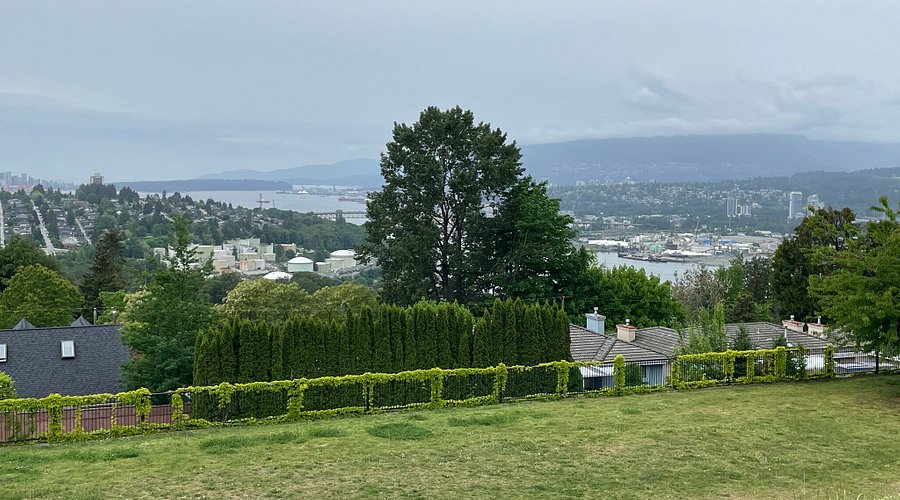
Urban Wilderness Discovery
The Burnaby Heights Trail represents one of the most surprising hiking experiences near Vancouver, offering a unique and crowd-free experience.
Located within the urban core of Burnaby, the trail provides access to significant elevation gain and excellent city views. The route connects several park systems through forested corridors.
Access begins at the Burnaby Heights Community School parking area, where the trail immediately climbs through dense second-growth forest.
The initial section can be steep, gaining elevation quickly through switchbacks and straight climbs. Trail markers are minimal, requiring careful navigation.
Elevation and City Views
Distance: 5.7 kilometers
Difficulty: Moderate to difficult
Elevation gain: 310 meters
Time required: 2.5 to 3 hours
The trail reaches its highest point at Capitol Hill, providing panoramic views across the Lower Mainland. On clear days, the views extend from Vancouver Island to the Cascade Mountains.
The summit area includes several informal viewpoints and picnic areas.
The descent follows a different route through the Squint Lake area, where a small lake provides reflection opportunities for photography.
The trail connects to the Trans Canada Trail system, offering extended hiking options. Several shortcuts exist for those wanting to reduce the overall distance.
Urban Forest Ecosystem
Despite its urban location, the trail passes through surprisingly diverse forest ecosystems. Old-growth stumps indicate the area’s logging history, while second-growth trees now dominate the canopy.
The forest supports urban-adapted wildlife, including coyotes, raccoons, and numerous bird species.
The trail system features several small streams and seasonal waterfalls, which are particularly active during spring snowmelt. Native plant species include salmonberry, elderberry, and various fern species.
The urban forest provides essential habitat corridors for wildlife movement between larger park areas.
Planning Your Hidden Hiking Adventures
Best Times to Visit
Most of the lesser-known trails in BC experience their peak conditions from April through October, when weather remains stable and daylight hours are extended. Spring offers the advantage of wildflower blooms and migrating bird activity, while fall provides spectacular color changes and the return of salmon runs.
Summer brings the warmest weather and longest days, as well as the highest visitor numbers, even on quiet trails. Early morning starts provide the best wildlife viewing opportunities and cooler temperatures.
Winter hiking is possible on most trails, though ice and snow may create challenging conditions.
Essential Gear and Safety Considerations
Metro Vancouver outdoor activities require appropriate preparation, even on the shorter trails. Essential gear includes waterproof footwear, rain protection, extra clothing layers, and adequate water.
Many of the hidden trails have limited cell phone coverage, making navigation apps less reliable.
Trail conditions can change rapidly due to weather, fallen trees, or maintenance activities. Check park websites and local hiking forums for current conditions before heading out.
Inform someone of your hiking plans and expected return time, especially for the more remote trails.
Connecting to Transportation Networks
Most of the secret hikes the Vancouver area offers require private vehicle access, as public transit connections are limited or nonexistent. Carpooling with other hikers can help reduce parking pressure at popular trailheads. Some trails connect to regional cycling networks, providing alternative access methods.
Consider combining multiple shorter hikes into day-long adventures by planning routes that connect different trail systems. Several of the featured trails are located within a 30-minute drive of each other, allowing for diverse experiences in a single outing.
Environmental Responsibility and Trail Etiquette
Leave No Trace Principles
The continued preservation of the hidden hiking trails in the Vancouver area depends on responsible visitor behavior. Leave No Trace principles apply to all outdoor activities, but become especially important on lesser-known trails that lack regular maintenance and monitoring.
Pack out all garbage, including organic waste like apple cores and banana peels, which can take months to decompose in coastal forest environments.
Stay on designated trails to prevent erosion and habitat damage. Avoid creating new social trails or shortcuts that can damage sensitive vegetation.
Wildlife Interaction Guidelines
Vancouver hiking spots support diverse wildlife populations that require respectful observation practices. Maintain safe distances from all wildlife, never feed animals, and store food securely. Black bears are present in most forested areas, requiring proper food storage and noise-making during travel.
Bird nesting seasons require extra care in areas near wetlands and forest edges. Avoid approaching nests or disturbing nesting birds, particularly during spring and early summer. Dogs must remain leashed in all regional parks to protect both wildlife and other visitors.
Supporting Conservation Efforts
Many of the quiet trails in BC are located within regional park systems that rely on public support for their maintenance and protection. Consider volunteering for trail maintenance activities or donating to conservation organizations that protect these areas.
Report trail damage, litter, or inappropriate behavior to park authorities to help maintain the quality of experience for future visitors. Participate in organized cleanup events when available, and encourage others to adopt responsible hiking practices.

